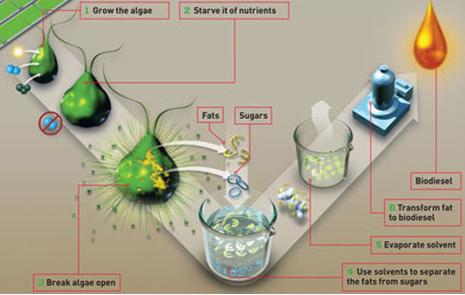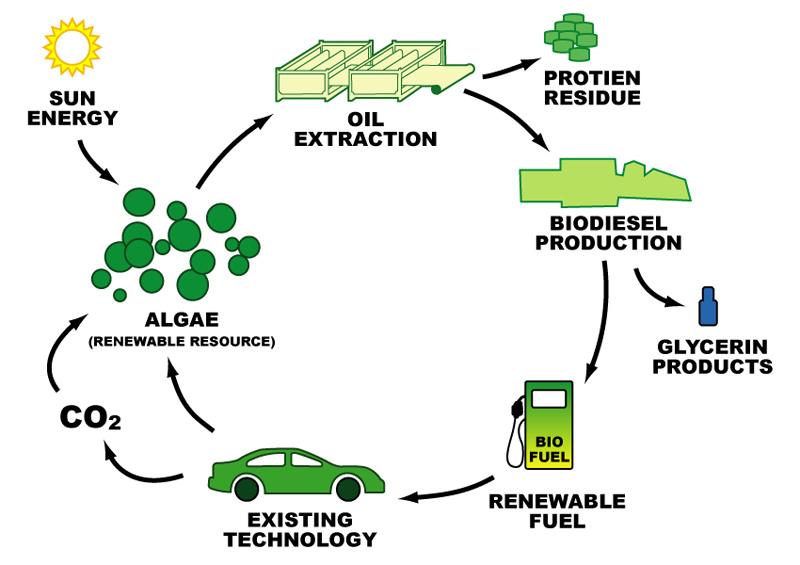Algae Farming and Biodiesel Production
Research
has been conducted that
shows 60% of algae biomass can be turned into oil. For this
project,
producing biodiesel is a means rather than an end. But something
must be
done with the large amounts of algae that will be produced. The
logical
step is to use this algae in an environmentally friendly way by using
it to
produce biodiesel.
Currently
biodiesel is created in a
variety of ways, the simplest of which uses used vegetable oil.
Large
scale production of biodiesel has been proven to be done effectively
using
canola oil based crops. Small biodiesel refineries are being
installed
throughout the U.S. and their products are being used within the
trucking and
farming industries.
As
the production of biodiesel using
vegetable oils has become a reality, the production of biodiesel
utilizing
algae has become a hot topic. Many scientists believe that large
scale farming
of algae can be achieved in large artificial shallow ponds subject
to year
round light and heat (i.e. deserts, or tropical regions).
While
Lake Mendota does not qualify
as an ideal location as explained above, it does offer a large area of
shallow
water and plenty of nutrients that are necessary for algae
growth. If
such a design is implemented in Lake Mendota, it will not serve as an
efficient
model of Algae farming, but rather the algae farming will serve a
secondary
service behind removing the excess nutrients and algae from the Yahara
Lakes.

Artists rendition of a possible algae farm situated
in a desert region. Notice
the large shallow ponds across the surface of the
desert.

This figure provides a visual display of the
chemical process that occurs during
the production of biodiesel.

This display provides a visual display of the chain in which
biodiesel is produced,
used, and recycled via CO2.
|

